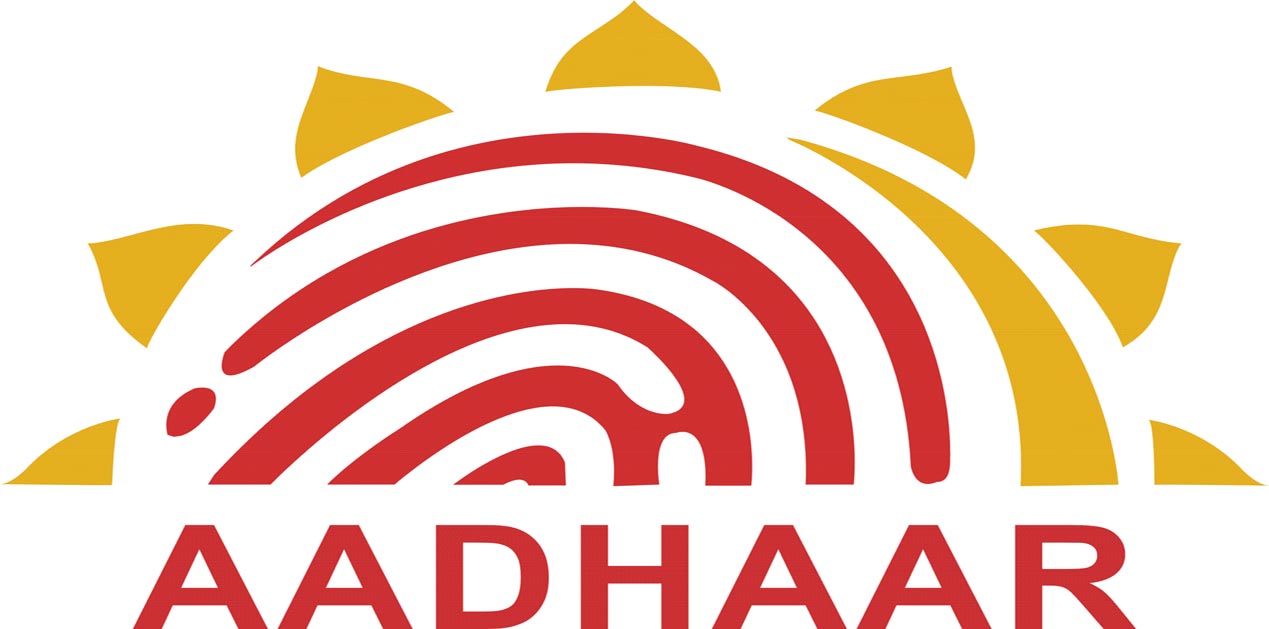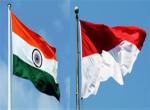The Union Government’s roadmap to expand the role of Aadhaar, from being just a voluntary document that was meant to maintain checks and balances on theft and pilferage from various social welfare schemes to a single verification identification document for non-welfare schemes, brings home the fact that the Government has realised the enormous scope in giving this platform a greater level of legitimacy and acceptability to create a system that is easily verifiable and cuts down on irregularities.
In this context, two recent announcements of the Government merit attention. First, is the provision to make Aadhaar mandatory for application of Permanent Account Number (PAN) and for filing of income tax returns through amendments to the Finance Bill, 2017. Union Finance Minister Arun Jaitley, while speaking in the Lok Sabha said, “There are many countries where such a situation exists. There is a social security number in America and in India it (Aadhaar) could be the counterpart”. He added that Aadhaar's biometric features would act as “anti-evasion” measures. As per the amendment, “Every person who is eligible for an Aadhaar number shall, on or after the 1st day of July 2017, quote Aadhaar number, (i) in the application form for allotment of the Permanent Account Number; (ii) in the return of income”. This will mean that with effect from July this year, taxpayers will not be able to file their income tax returns if they either do not provide their Aadhaar number or show a proof of having applied for the document. Simultaneously, those who do not have an Aadhaar, will have to enroll themselves immediately. Meanwhile, they can use their enrolment number for filing purpose until they get their Aadhaar number. And for those, who will be applying for a new PAN card, will have to mention their Aadhaar number on the application itself. Failure to provide for either of the above mentioned documents will result in PAN and income-tax return being deemed as void.
That the Finance Minister, instead of plugging loopholes in the PAN card, has reposed faith on Aadhaar, points to two facts: One, the failure of the system to spot fraudsters using the PAN cards; two, security features are stronger for Aadhaar than the PAN card. And why the Government wouldn’t be tempted to bring all taxpayers in the Aadhaar net, given that the outreach of Aadhaar far outweighs that of PAN card. While just about 250 million people are having a PAN card, out of which only 40 million taxpayers pay tax, the Aadhaar has a pan-India presence of about 1.13 billion as on March 31, 2017. While the provisions of the Finance Bill are in the right direction, they might not be welcomed by many taxpayers. The PAN-Aadhaar linkage will offer greater advantage to the tax-man than the tax-payer. For the former, this means the materialisation of a tracking model, that will make the latter accountable. The ultimate aim is to make the tax-paying system transparent by maintaining checks and balances on illegal practices like tax evasion and fraud. For long, PAN cards have been used for all the wrong reasons, as a tax evasion strategy. Numerous cases can be tracked from the past where one single person has been holding not one but five PAN cards to show lower levels of income against each. There were many, who do give their PAN card details, but a fake one. Others give the identity of ghost individuals. Such transactions remain secret from the taxman. With the proposed linkage between PAN and Adhaar, the Government is hopeful that the present move, along with the demonetisation decision, will achieve multiple purposes. One, it will ensure that no individual holds multiple PAN cards. Two, all transactions will now be traceable. The linkage itself will ensure that no fake transactions takes place. Once this is done, the Income Tax Department will have all the information related to the taxpayers’ financial transactions and belongings at its disposal.
A comparative study of the transactions with the ones reported by way of tax return of a particular person can be obtained and if they do not match, the tax-man can start further investigations. While establishing the tax-payer’s accountability more forcefully, this move will also come as a boon for the Government's drive against black money and benami transactions as the Government will be able to relate transactions with a real identifiable person. However, on his part, the tax-man will have to ensure that the tax-payers are not harassed. Second, is to do with the Department of Telecommunication's directive to all telecom service providers to re-verify the credentials of their subscribers through an Aadhaar-based, electronically authenticated Know Your Customer (KYC) process within a year. This is surely welcome in view of the painful yet impossible procedure one has to undergo to procure a SIM card. Situations are more problematic for people who migrate from their home State to other. No form of identity proof — be it a driving license, or a voter card, or a rent agreement — would suffice to serve as an identification unless there's a proof that one is tied to a particular location. As seen from the recent success of Reliance Jio, which used the Aadhaar network to enroll millions of subscribers for its network, it is expected that procurement of SIM cards will become simpler. However, the Government must ensure that this procedure has a pan-India presence.
Perhaps, the enormous scope of this unique identification number has also been realised by many Central ministries as they have issued notifications to make Aadhaar compulsory for a host of schemes offered by them. Aadhar has now become mandatory for a host of welfare and non-welfare schemes, which include payments of ex-gratia amounts to the Bhopal gas leak victims, the Sarva Shiksha Abhiyan, Bonded Labour Rehabilitation Scheme, National Action Plan for Skill Training of Persons with Disabilities and the National Health Mission, among others. The diverse nature of the schemes makes it clear that the Government virtually wants to use the Aadhaar as an essential tool to establish a communion between the state and its citizens. The Government's identity programme has also jolted the nation, including the Opposition and advocates of the anti-Aadhaar regime, who have argued that unique identification number is being forced upon the citizens. Such people have taken to the courts on grounds of privacy concerns, national security and exclusion of some people from welfare schemes. These obstacles seek to undermine the potential of the programme.
Most crucially, the question of entitlement, with regards to the constitutional validity of the scheme, has been taken up with the top court time and again. Naysayers have argued that the Government has been too impulsive in its approach to make Aadhaar mandatory for practically everything that the citizen wants to do — be it enrolment in schools and colleges, or the procurement of a driving license to access various Government benefits. The most recent Supreme Court ruling came in March, where the apex court reiterated its previous ruling, saying that "the Aadhaar card scheme is purely voluntary, and it cannot be made mandatory till the matter is finally decided by this court one way or the other”. Earlier, on September 23, 2013, the Supreme Court had made it clear that “no person should suffer for not getting the Aadhaar card, in spite of the fact that some authority had issued a circular making it mandatory”. It added that “when any person applies to get the Aadhaar card voluntarily, it may be checked whether that person is entitled for it under the law and it should not be given to any illegal immigrant”. This is not to say that the apex court is completely against making Aadhaar mandatory. It allowed the Government to use the card for the delivery of LPG gas, for various public distribution systems, for MGNREGS, for Jan Dhan Yojana, for PAN card, filing tax returns, and opening of bank accounts. However, it predetermined that the Aadhaar must remain voluntary and could not be made mandatory until such time as the matter was finally decided. Various critics and analysts have still argued that the Government has deliberately breached interim orders of the court and made Aadhaar compulsory and that there are tensions between the viewpoint of the executive and the judiciary on Aadhaar.
It's true that the Government is wanting to make Aadhaar mandatory for welfare schemes but, like the court, it has maintained the line that Aadhaar ought to be voluntary. And for this, a relevant provision by way of law is in place to ensure that social welfare benefits are not denied to the needy for want of an Aadhaar card. Section 7 of the Aadhaar (Targeted Delivery of Financial and Other Subsidies, Benefits and Services) Act, 2016, makes it clear that until an Aadhaar number is assigned to the targeted individual, he or she can continue to avail the benefits. It is surprising that the Congress party, which was the ‘inventor’ of this programme, stands opposed to the BJP's thrust to give legitimacy to this programme. Aadhaar, a 12-digit UID number based on the demographic and biometric information, was started by the UPA Government in 2009. Initially, the Unique Identification Authority of India (UIDAI), under the Planning Commission, was given the mammoth task to give a billion Indians an identity card. Subsequently, in a bold move, the then Prime Minister, Dr. Manmohan Singh appointed Nandan Nilekani, co-founder of Infosys and now the chief architect of Aadhaar, to head the project. And Nilekani pulled off the scheme really well. Many initiatives were undertaken under him to make its presence felt across the country. Among them, crucial ones included the launch of online verification system for Aadhar numbers. Similarly, an Aadhaar-linked direct benefit transfer scheme was launched. The scheme became a huge success, so much that enrolment accelerated from 100 million in November 2011 to 200 million in February 2012.
However, Nilekani failed to convince his political bosses to give Aadhaar a statutory backing. The slow move of the UPA government was further impeded when the programme ran into controversies due to operational hurdles. Enemies were many. The foremost criticism came from the Opposition, which was then headed by the BJP, which argued that for Aadhaar to keep a check on illegal immigrants, it must be given to Indian citizens only and not to all residents. The Left, on the other hand, lambasted that the Aadhaar scheme was a ploy on the part of the UPA regime to deny subsidies to people. Civil society members and activists were apprehensive of the fact that Aadhaar numbers could be used to gather information about people, which, when landing in the wrong hands, could be used for mischievous purposes. In fact, leaders within the Congress itself were divided over the project’s outreach. Many saw it as a threat to existing power equations. Tensions also started brewing up between Nilekani and the then Finance Minister, P Chidambaram, over enrolment procedures. Ultimately, both had to put their foot down as the UIDAI sought the approval to enroll the population. Meanwhile, the UPA's Government's half-hearted efforts to give a legislative backing to the Aadhaar got a setback when the Parliamentary Committee, headed by Yashwant Sinha, rejected the National Identification Authority of India Bill, the proposed law under which UIDAI and Aadhaar were to function.
Yet another hurdle was a Public Interest Litigation filed by former Karnataka High Court judge, Justice KS Puttaswamy, and a lawyer, Parvesh Khanna, against the Government in the Supreme Court in November 2012. Both were of the view that the Government was implementing the project without any legislative backing. Subsequently, though the UPA tried tooth and nail to give legislative backing to the project, it eventually failed. The Bill could not make it beyond the Standing Committee. Yet another move that backfired was the use of Aadhaar as one of the primary poll planks by the party for the Lok Sabha election. The UPA failed in executing a well-conceptualised idea and the dream of Aadhaar for all entered the realm of uncertainty.
However, the Modi Government decided to give the ambitious project a push by setting a deadline to bring everyone under its coverage. On the advice of Nilekani, who held several meetings with Prime Minister Modi and Finance Minister Jaitley and convinced them about the merits of this scheme, the BJP-led Government, keeping politics at bay, resolved to revive it. Not only did it accelerate its plans to complete over 900 million enrolments by the end of 2014 but also gave legal backing to it and re-approached the Supreme Court to pave the way to mandate Aadhaar for all subsidies — something that the UPA had failed to do. The most revolutionary moment for this programme was the passage of the Aadhaar Bill in March 2016, which raised much criticism because it was introduced as a money Bill, which meant that it did not require the approval of the Rajya Sabha, where in the govt. did not have the numbers to ensure its passage. The Government's intent was clear. It did not want this crucial piece of legislation to meet a roadblock in the Upper House, where the Opposition had struck a belligerent note on various matters. It was certain that the Bill was bound to suffer. As expected, the Opposition cried foul over the Centre's decision. It argued that the Government had slighted the Upper House by sidelining it on the Aadhaar Bill. While it's true that for any Bill to be full-proof, it needs to scrutinised and debated threadbare, the Opposition must also reflect on whether they have been rightly utilising their combined numerical strength in the Upper House. Or are the opposition parties just disrupting meritorious policies and programmes that deserve the light of the day soon.
The result today is for all to see. Aadhaar has emerged as the world’s largest biometric identification programme. About 99 per cent of all adults in the country (barring Assam and Meghalaya, where the Aadhaar exercise is not yet on) have an Aadhaar number. But the real gap is in the 5-18 year category. Nearly 21 crore people in this age group are still to get the UID card. This is why the Government has modified its strategy to make Aadhaar compulsory for getting university degrees, for mid-day meals, for school admissions etc. Of course it is the responsibility of the Government to address reservations over privacy issues. The threat is for real as chances are high that personal biometric data of individuals, as collected by the Aadhaar authority, can be easily accessed by private organisations who may misuse it for furthering their cause. The fear of identity theft is genuine. There is an army of professional criminals and hackers, working day and night, to get personal details from databases to commit crimes.
Much of the opposition is to do with sensitive personal data collected for the Aadhaar card. There are Sections in the Act which address the issue of privacy and confidentiality of information. For example, Section 29 (1) of the Act says that “no biometric information will be shared for any reason whatsoever, or used for any purpose other than Aadhaar number generation and authentication”. However, Section 33 of the same Act undermines this provision. It says that “in the interest of national security”, the biometric info may be accessed if authorised by a Joint Secretary rank officer. Such conflict of provisions will only fan the fears of critics who have questioned the rationale behind this programme. Clearly, the provisions are not sufficient to deal with data protection because they have a clause over a clause. The Government has already made it clear that a draft policy to address the privacy issue is in the pipeline, but we still don’t have a timeline for that. Boundary line needs to be drawn to address privacy concerns. This would save the Government from over-reactions. Amendments to the legislation, which the Government has failed to incorporate in the just passed Financial Bill, must be brought sooner than later. Whatever be it, the issues with Aadhaar are not something that cannot be addressed. Neither do they prove that the Government is malicious in its intent to project it as a single-verification identification. In this sense, the criticism that the Government has been using this programme to further its narrow cause, falls flat.
India is in a unique position. It can learn from the experiences of the US, where the Social Security Number has been a huge success — and also from the UK, where the ID card project was a big failure.
(The writer is a journalist with an interest in social welfare issues)
Published Date: http://www.urbannewsdigest.in









Post new comment